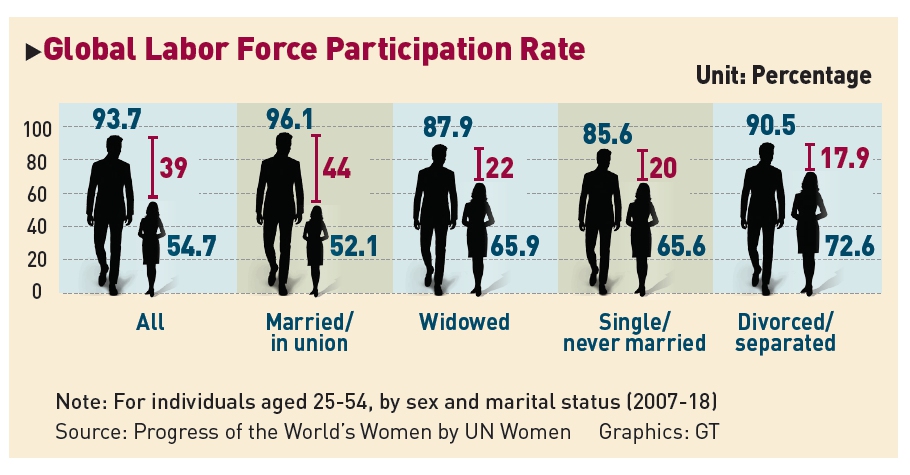UN says pandemic will slow already miniscule progress in women’s rights
Source: Reuters Published: 2020/10/21 19:13:40
The coronavirus pandemic threatens to grind down progress toward gender equality that already was creeping along at a snail's pace, the United Nations said on Tuesday.

Only modest gains in education and lowered maternal mortality have taken place since the UN's 189 members made a commitment to women's rights at a landmark conference in Beijing in 1995, Secretary-General António Guterres said.
"Progress towards equal power and equal rights for women remains elusive," Guterres said in a statement.
"No country has achieved gender equality, and the COVID-19 crisis threatens to erode the limited gains that have been made."
Not only did UN members make the pledge in China a quarter century ago, but achieving gender equality by 2030 was one of the global goals adopted in 2015 to tackle social ills like poverty and conflict.
The UN report found boys and girls are equally likely to go to primary and secondary school, and women are more likely than men to enroll in higher education, but fewer than half of women work in the paid labor market compared with three-quarters of men. That's the same gap that existed in 1995, it said.
"Too many people think 'Oh, well it's good that girls are finishing school and more women are going to university,' but clearly that's not enough," said Jeni Klugman, managing director of Georgetown University's Institute for Women, Peace and Security.
Women's workforce participation is particularly low, below 30 percent, in Southern Asia, Northern Africa and Western Asia, the UN said.
Progress in gender parity in political leadership also is slow, the UN said, with only eight more female heads of state or government today than in 1995.
The proportion of women in managerial positions is nearly the same as it was in 1995, the UN said. Slowing women's progress is the unpaid work they are likely expected to do at home, it said.
Among single women aged 25 to 54, four out of five are employed, but if they have a partner and child, the rate drops below half, it said. According to data from 38 countries and territories, women were more likely than men to be infected, possibly because about 70 percent of healthcare workers are female.
Newspaper headline: Gender inequities nearly as bad as 1995

Only modest gains in education and lowered maternal mortality have taken place since the UN's 189 members made a commitment to women's rights at a landmark conference in Beijing in 1995, Secretary-General António Guterres said.
"Progress towards equal power and equal rights for women remains elusive," Guterres said in a statement.
"No country has achieved gender equality, and the COVID-19 crisis threatens to erode the limited gains that have been made."
Not only did UN members make the pledge in China a quarter century ago, but achieving gender equality by 2030 was one of the global goals adopted in 2015 to tackle social ills like poverty and conflict.
The UN report found boys and girls are equally likely to go to primary and secondary school, and women are more likely than men to enroll in higher education, but fewer than half of women work in the paid labor market compared with three-quarters of men. That's the same gap that existed in 1995, it said.
"Too many people think 'Oh, well it's good that girls are finishing school and more women are going to university,' but clearly that's not enough," said Jeni Klugman, managing director of Georgetown University's Institute for Women, Peace and Security.
Women's workforce participation is particularly low, below 30 percent, in Southern Asia, Northern Africa and Western Asia, the UN said.
Progress in gender parity in political leadership also is slow, the UN said, with only eight more female heads of state or government today than in 1995.
The proportion of women in managerial positions is nearly the same as it was in 1995, the UN said. Slowing women's progress is the unpaid work they are likely expected to do at home, it said.
Among single women aged 25 to 54, four out of five are employed, but if they have a partner and child, the rate drops below half, it said. According to data from 38 countries and territories, women were more likely than men to be infected, possibly because about 70 percent of healthcare workers are female.
Newspaper headline: Gender inequities nearly as bad as 1995
Posted in: CROSS-BORDERS